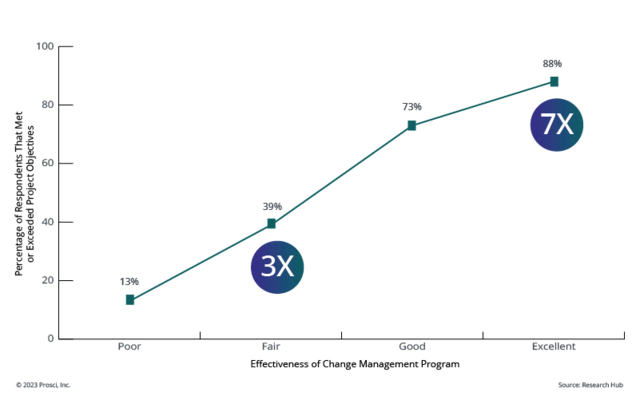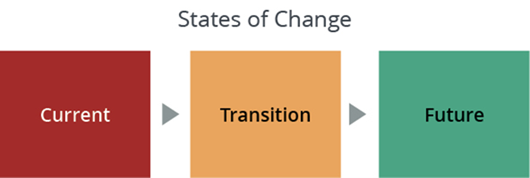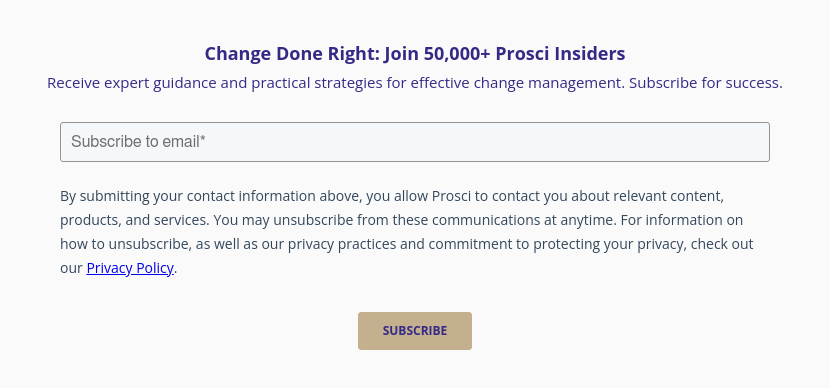
Regardless of the source and type of change, or how formalized the project or initiative, people will have to do their work differently. Organizational change is not homogeneous, although it's sometimes treated as such. Instead, organizational change takes place when employees make specific adjustments to their individual behaviors, processes and workflows. Each impacted employee makes their own transition from their own current state to their own future state.

Getting people to change how they work is critical to achieving desired outcomes
The goal of any organizational change is to reach a future state where performance is better than it had been in the current state. The organization can't do that alone. It can only reach the desired future state when employees reach their individual future states. Success of the organizational change ties directly to how successfully each impacted employee makes this personal transition. Did Andre adopt the change to his work? Did Becky adopt the change to her work? Did Carlos and Dhara make the changes to their work?
Prosci's CMROI Model comprises three areas of the people side of change that contribute to or reduce the potential ROI a project can deliver:
- Speed of adoption – How quickly did individuals make the change?
- Ultimate utilization – How many individuals made the change?
- Proficiency – How effective were the individuals in their own future state?
If speed of adoption is slower than expected, ROI or outcomes will be less than expected or desired. If the ultimate utilization rate is less than expected (i.e., people opt out or find workarounds), ROI or outcomes will be less than expected. If proficiency is lower than expected (i.e., an employee does not deliver the intended improvement in their future state), ROI or outcomes will be less than expected.
A growing body of data shows a correlation between change management effectiveness and the likelihood that a project or initiative delivers intended outcomes. Prosci's Best Practices in Change Management research consistently shows that change management of any kind, from poor to excellent, delivers significantly better project outcomes.

The correlation rests on the fact that organizations achieve results when individuals make their own changes successfully. A perfectly designed process that no one follows does not deliver value to the organization. A perfectly designed technology solution that no one uses does not deliver outcomes or objectives to the organization. Change efforts depend on the people side of change to drive organizational benefits.
Change management provides the structure and intent you need for success
Prosci's formal definition of change management is the application of a set of tools, processes, skills and principles for managing the people side of change to achieve the desired outcomes of a change project or initiative.
Change management provides the structure, intent and tools for encouraging and supporting individuals through their own personal changes. Once stakeholders understand the logic, it easier to introduce change management as the processes and tools for encouraging individuals to make successful personal changes.
It's also important to clarify that change in an organization needs to be managed. The human element makes it too risky to assume that everything will work out. Change management helps ensure that the people side of bringing changes to life leads you to successful outcomes.
Business Results Depend on Change Management
To reposition change management, it's critical to connect change management to business results. This starts with demonstrating that change impacts the way individual people do their work, and how they adopt and use organizational project changes as individuals. Addressing the human element, or the people side of change, is the key to helping stakeholders view change management as a clear necessity in your organization.






